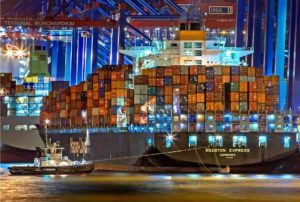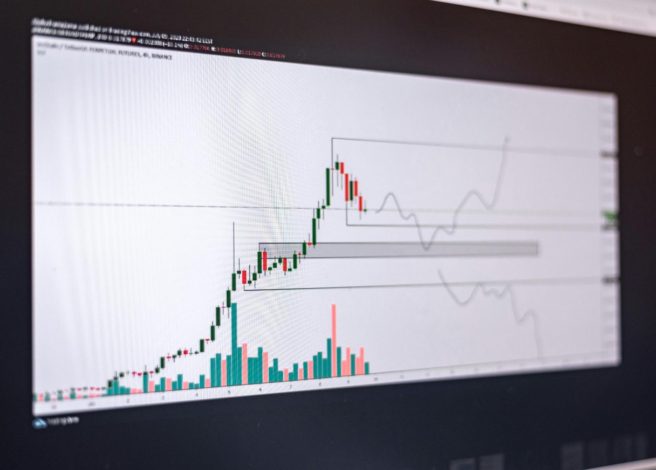At a Glance:
- Tariff on PET: A new U.S. tariff on imported PET and rPET resin took effect September 8, 2025, driving up plastic container costs.
- Industry impact: Some suppliers are notifying customers of higher prices right as the holiday season ramps up.
- Sustainability setback: Tariffs on rPET may discourage recycling by making recycled content more expensive.
- Your move: Avoid knee-jerk reactions — talk with suppliers and plan for long-term adjustments.
We’re not going to sugarcoat this: As of September 8, 2025, the cost of imported PET resin has increased due to a new tariff that was implemented. You probably already knew this, didn’t you? Or at least you may have noticed something significant in your operations: Many customers have started receiving letters from various plastic food packaging manufacturers, informing them that the prices of their products will increase.
As a food industry pro, you’re already busy enough. You’re balancing inventory with ingredients, markets with merchandising, and flavors with forecasts. Do you really have time to figure out international logistics when Thanksgiving is sneaking up on us faster than a farmer on a tom turkey — and you still haven’t perfected your signature gravy?!
It’s okay. That’s why we’re here. At Inline Plastics, we’ve been in the business of providing fresh food businesses with packaging solutions for over 55 years. We have seen our share of market fluctuations and want to provide some perspective on this issue that may ease some of your concerns.
Keep in mind: We are not international trade experts. Like our previous reporting on tariffs, we aim to provide a high-level overview of the industry’s developments, their potential impact on you, and offer some practical tips on navigating this complex situation. Because in the end, we’re all in this together.
Where Did These PET Resin Tariffs Suddenly Come From?
 Here’s the deal: The White House added PET resin to its list of reciprocal tariffs which went into effect on September 8, 2025. According to Resource Recycling, this move came as part of a broader trade policy aimed at addressing trade imbalances with various countries.
Here’s the deal: The White House added PET resin to its list of reciprocal tariffs which went into effect on September 8, 2025. According to Resource Recycling, this move came as part of a broader trade policy aimed at addressing trade imbalances with various countries.
But wait, it gets a little more complicated. The tariffs don’t just affect virgin PET resin — they also include recycled PET (rPET). That’s right, even the environmentally friendly stuff got caught up in this. According to Plastics Today, both PET and rPET resin imports are now subject to these reciprocal tariffs, which vary depending on the country of origin.
The Association of Plastic Recyclers (APR) is, understandably, worried about the situation. In their official statement, they expressed concern that ending tariff exemptions for rPET could actually hurt domestic recycling efforts. More on this coming up. It’s one of those situations where the solution to one problem might accidentally create another.
Is Everyone Going to Be Impacted by PET Tariffs?
Here’s where we need to pump the brakes a bit. While this is definitely an industry-wide issue, not everyone is being hit equally. Think of it like a rainstorm — everyone knows it’s raining, but some people brought umbrellas and some didn’t.
According to Recycling Today, these reciprocal tariffs vary by country. That’s the key word: reciprocal. The tariff rates depend on where the PET or rPET is coming from. Some countries face higher tariffs than others based on their existing trade policies with the United States.
So what does this actually mean for your packaging costs? It depends on your supplier’s supply chain. If your packaging manufacturer sources their resin from countries with high reciprocal tariffs, you’re probably feeling more pain. If they source from countries with lower tariffs or produce domestically, the impact might be less dramatic.
This is why you might be hearing different stories from different suppliers or even from other business owners in your network. Your competitor down the street might have gotten a 15% increase letter while you got a 5% increase — or vice versa. You’re both dealing with tariff-related impacts, but the severity depends on where the resin originated.
Resource Recycling noted that trade alliances are shifting, which adds another layer of complexity. Suppliers might be scrambling to adjust their sourcing strategies, looking for countries with more favorable tariff rates, or investing more in domestic production.
How Much Are We Talking About?
 The exact increase varies depending on where your supplier sources their materials, but the impact is being felt across the board.
The exact increase varies depending on where your supplier sources their materials, but the impact is being felt across the board.
Let’s get into the nitty-gritty here: While the new tariff on imported PET adds extra costs, reports suggest that the underlying price of PET resin itself has stayed relatively steady.
According to ICIS, weekly spot and contract PET prices have shown only small, incremental changes rather than sharp jumps. In the U.S., PET resin prices actually fell in the second quarter of 2025 — dropping about 5.7% to around $1,117 (USD) per metric ton — due to weaker demand and lower feedstock costs, via ChemAnalyst. Meanwhile, PET resin export prices in Asia were described as “static” in mid-2025, meaning producers were largely holding prices steady despite global shipping challenges, according to Czapp.
We spoke with Antulio Borneo, Vice President of the PET Chain at ICIS (Independent Commodity Intelligence Services). When asked about the resin price, Borneo stated, “All PET producers announced a six cents per-pound increase across all grades of resin. One of them announced a six to nine cents per-pound increase.”
Still with us? We’re almost through the numbers.
According to Resource Recycling, approximately 90% of year-to-date PET imports came from just 11 countries. Nine of these nations were subject to the new tariffs, while Canada and Mexico remained exempt. The affected countries, listed below by import volume with their respective tariff rates as established in the July 31 executive order, are:
- Taiwan: 20%
- South Korea: 15%
- Thailand: 19%
- Pakistan: 19%
- Vietnam: 20%
- India: 25%
- Japan: 15%
- Malaysia: 19%
- Indonesia: 19%
Resource Recycling noted something interesting in their May report: Bale pricing was already bucking seasonal trends before these tariffs even took effect. Translation? The market was already doing its own thing, and then this tariff situation came along and added another ingredient to the mix.
Here’s what makes this particularly tricky for you: The timing. We’re heading into the holiday season — one of the busiest times for fresh food businesses. Your deli counter is about to get slammed with party platter orders, your bakery is gearing up for pie season, and now you’re dealing with price increases on the containers that hold it all.
Like that awkward Christmas when your cousin was going through his “showers are for squares” phase, you’re going to get through this. Stay with us.
Why Should You Care About rPET Being Included?
 This is where things get interesting from a sustainability perspective. Many food businesses have been transitioning to packaging with recycled content. It’s good for marketing and it’s great for the environment.
This is where things get interesting from a sustainability perspective. Many food businesses have been transitioning to packaging with recycled content. It’s good for marketing and it’s great for the environment.
But according to the APR’s statement, including rPET (recycled polyethylene terephthalate) in these tariffs could actually discourage the use of recycled materials. It’s like trying to encourage people to eat healthier while simultaneously raising the price of salad. The logic gets a little fuzzy, and it can be frustrating when you’re trying to do the right thing for the planet.
The recycling industry relies on a delicate balance of collection, processing, and end markets. When you mess with one part of that equation — like making imported rPET more expensive — it can have ripple effects throughout the whole system.
What Does This Mean for Your Business?
Let’s bring this back to your walk-in cooler. You’re probably wondering: “Okay, so what do I actually do about this?”
First, know that you’re not alone in this scenario. Your fellow business owners are having the same conversations with their accountants.
According to Plastics Today, the tariffs have created uncertainty in the supply chain, and uncertainty tends to make everyone a little nervous. But here’s the thing about uncertainty: It eventually becomes certainty. Markets adjust, suppliers adapt, and businesses figure out their next moves.
You might be looking at your current packaging costs and feeling a little queasy. That’s normal. But remember, this isn’t your first rodeo with price increases. You’ve dealt with ingredient costs going up, labor costs rising, and energy prices fluctuating. This is just another variable in an already complex equation.
How Can You Navigate the Rising PET Prices?
 That was a lot to take in.
That was a lot to take in.
Here’s where we get practical. You’ve got a few options on the table:
Have honest conversations with your packaging suppliers. They’re dealing with this too, and they might have insights or alternatives you haven’t considered. There may be domestically produced options that suddenly become more financially sensible. Various materials can also be suitable for specific products.
Consider the long game. Yes, prices are up now, but markets are dynamic. Resource Recycling pointed out that trade alliances are shifting. What’s expensive today might be more reasonable in six months. What seems like the only option now might have competition next quarter.
And here’s something that might feel counterintuitive: Don’t panic. Knee-jerk reactions rarely lead to the best decisions — even ChatGPT now takes a minute to think. Take a breath, gather information, and make thoughtful choices about your packaging strategy.
The reality is that tariffs, trade policies, and market fluctuations are part of doing business in a global economy. It’s not always convenient, it’s rarely simple, but it is manageable.
It’s not all tariff-ying (we like to have fun here). So yes, your PET costs have increased. But you’re still in business, you’re still serving customers, and you’re still finding ways to make it work. That’s not nothing. That’s actually everything.
Do you want to connect more to the plastics industry? Visit our Learning Center today and explore a wide range of topics.
DISCLAIMER: This article is provided for informational and educational purposes only. We are not lawyers, financial advisors, or market analysts. The information contained herein should not be construed as legal, financial, or investment advice. For specific guidance related to your business situation, please consult with qualified legal and financial professionals.

